#126 in Vietnam
Thịt Kho Tàu: Basic Information
Pronunciation
Alternative Name(s)
Dish Type
Course
Mealtime
Popular Variations
- Northern-style Thịt Kho Tàu (without coconut water)
- Thịt Kho Măng Hột Vịt (with bamboo shoots)
Thịt Kho Tàu: Ingredients and Preparation
Main Ingredients
Main Cooking Method
Preparation Process
Thịt Kho Tàu: A Deep Dive
Cultural Significance
Taste
Texture
Aroma
Color
Serving Style
Serving Temperature
Accompaniment
Occasions
Seasons
Special Diets
Calories
Popularity
Popular Similar Dishes
- Thịt Kho
- Gà Kho
- Bò Kho
Popular Dining Area
Thịt kho tàu is a traditional Vietnamese dish made with pork, eggs, and coconut water, seasoned with fish sauce, sugar, and spices.
Also known as caramelized pork and eggs, thịt kho tàu is known for its tender pork and flavorful eggs, which absorb the flavors of the braising liquid.
Thịt kho tàu is a well-loved delicacy in Southern Vietnam, though it has an intriguing origin, which I will explain shortly.
Next, you’ll learn about the essential ingredients to prepare and the steps to make this Vietnamese meaty dish with some ideal food to go with it.
Like any culinary creation, thịt kho tàu presents both pros and cons to consider. In case you still have more questions about thịt kho tàu, check the FAQs section!
And don’t forget to look at dishes similar to thịt kho tàu for a well-rounded understanding of this delight.
Key Points
Thịt Kho Tàu Images
What Is the Origin of Thịt Kho Tàu?
Thịt kho tàu’s origin is unclear. Many people believe its name, translating to “pork braised on a boat”, that fisherman would prepare a large pot of this dish for long sea voyages in the past.
However, according to Vietnamese cultural writer Bình Nguyên Lộc, he claims the word “tàu” in the Western Vietnam dialect means “blandly sweet and salty.” The flavor is likened to the taste of the Cái River’s waters, known as Cái Tàu Hạ and Cái Tàu Thượng.
Today, thịt kho tàu is a popular choice during the Vietnamese Lunar New Year (Tết holiday), especially since locals can enjoy it for several days while waiting for markets to reopen.
After knowing the origin of thịt kho tàu, let’s now turn your attention to the key ingredients that make up this pork and egg dish.
What Are the Ingredients in Thịt Kho Tàu?
There are three main components in making thịt kho tàu, such as:

Pork
Preferably pork belly, shoulder, or a mix of lean and fatty cuts.

Eggs
Typically used duck eggs, but they can be replaced by chicken or quail eggs. They are boiled and peeled.

Coconut water
Used as the braising liquid. However, the Northern style of thịt kho tàu doesn’t use coconut water.
On the other hand, seasonings, like fish sauce, Vietnamese caramel sauce (nước màu), sugar, and pepper, are essential. FYI, in some places in Central and Southern Vietnam, locals add bamboo shoots to traditional thịt kho tàu, creating a dish named thịt kho măng hột vịt.
With these components, it’s time to make them by yourself. And trust me! It’s not a hard task.
How To Make Thịt Kho Tàu?
Thịt kho tàu is not a challenging Vietnamese delicacy. Here are three main steps to prepare it at home.
Step 1: Preparing and Marinating
Cut pork into large square pieces and marinate with pepper, fish sauce, and sugar for 30 minutes. Simultaneously, boil and peel duck eggs.
Step 2: Making Caramel Sauce
Make caramel sauce by melting sugar until golden brown. Add marinated pork to the caramel sauce, coat evenly, and pour in coconut water to cover.
Step 3: Braising or Stewing
Cook all ingredients until the pork is tender. Serve hot.
For a simple meal, locals enjoy thịt kho tàu with steamed rice, but there are more options to maximize its deliciousness.
Which Dishes That Can Go With Thịt Kho Tàu in Vietnam?
Following are some great Vietnamese-style delicacies to savor thịt kho tàu with.
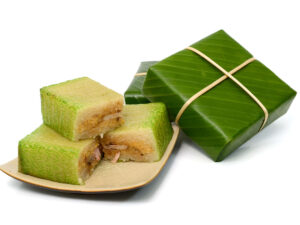
Bánh Chưng
Glutinous rice cake with pork filling, wrapped in banana leaves with a square shape; traditionally made for the Vietnamese New Year
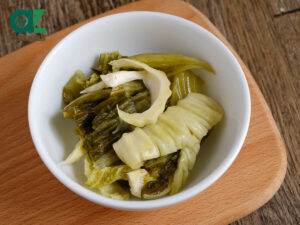
Dưa Chua
Refers to pickled mustard greens dish, sometimes made with Napa cabbage in pickling solution.
Coming up, let’s find out the benefits and drawbacks of savoring thịt kho tàu.
Pros and Cons of Eating Thịt Kho Tàu
Understanding the pros and cons of eating thịt kho tàu can help you appreciate this traditional dish while being mindful of its impact on your dietary preferences and health. Here are some typical advantages and drawbacks to check out.
Pros
Cons
In the next part, I’ll address some common questions about thịt kho tàu and enhance your understanding of this delicious dish.




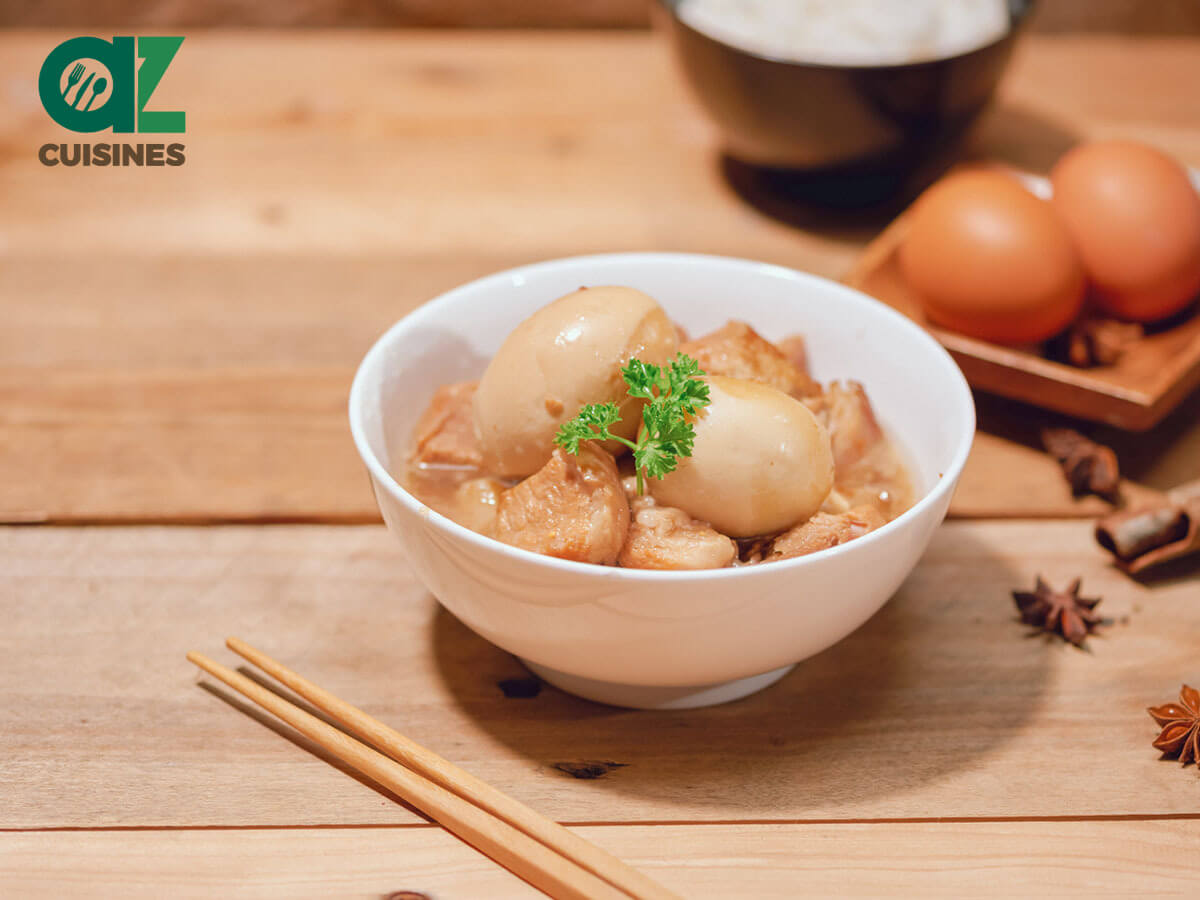
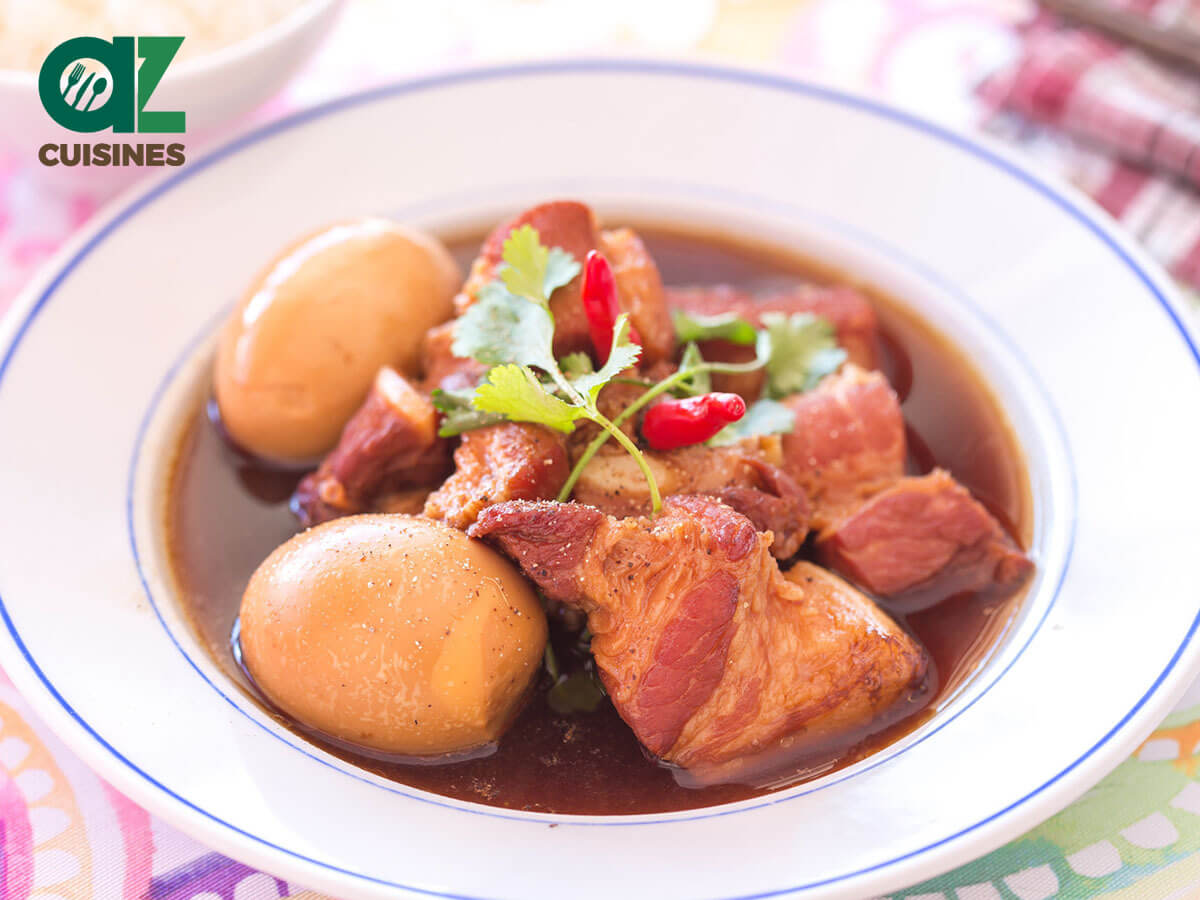
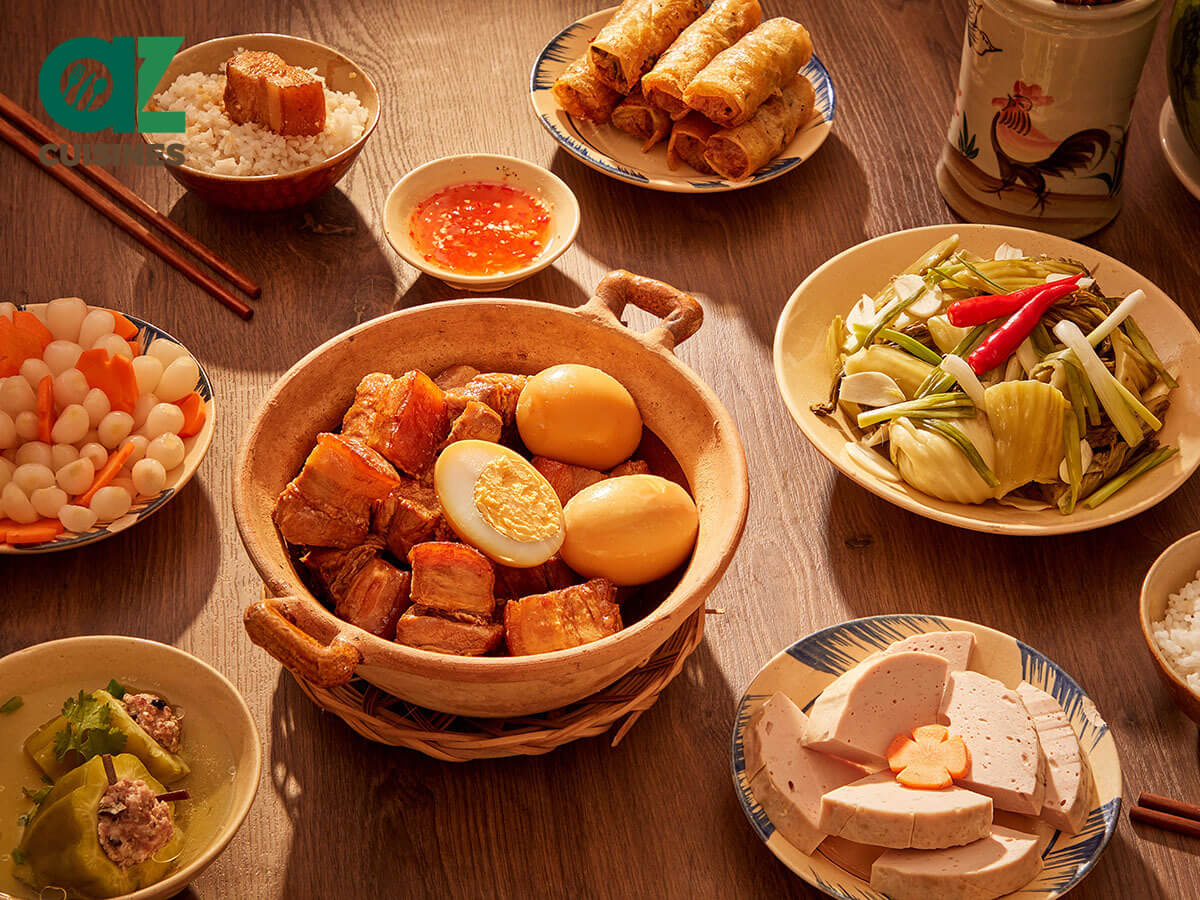
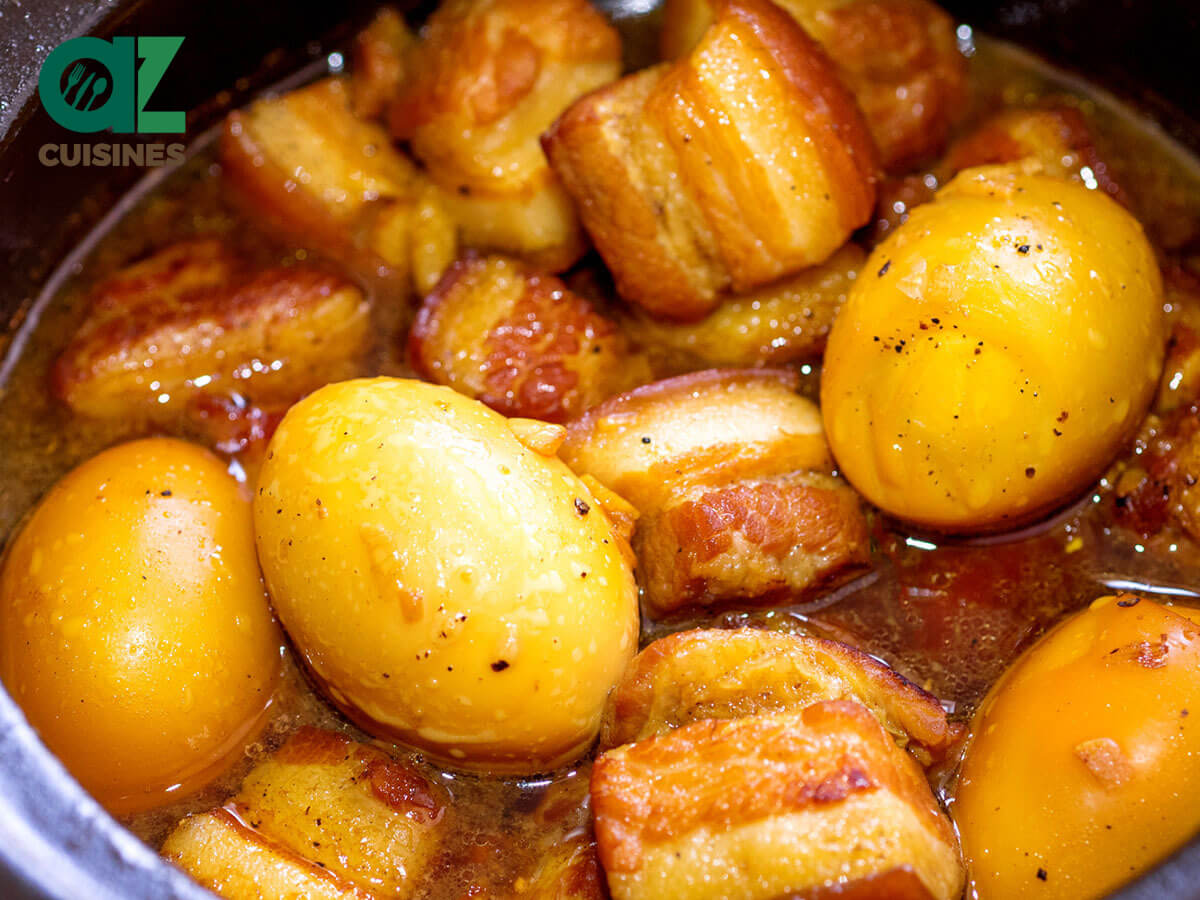
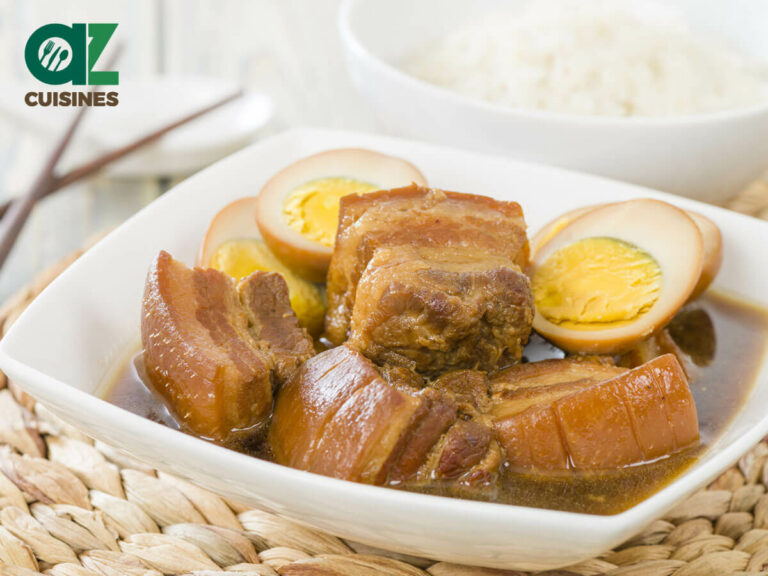

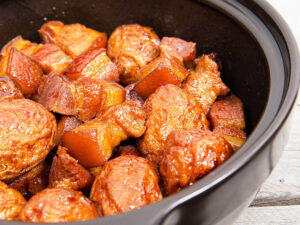

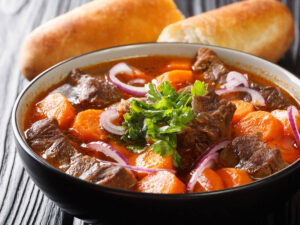
Truc Tran (Kris)
Senior Food Editor
Expertise
Home Cooking, Meal Planning, Recipe Development, Baking and Pastry, Food Editor, Cooking-video Maker, Vietnamese Food Evaluation Expert
Education
Truc Tran (Kris), an experienced food writer and editor, is great at exploring and describing global cuisines, from simple street food to fancy dining. In her writing, she skillfully mixes different flavors, cooking methods, and culinary traditions, showing the unique character of various cultures through their food and drinks. On azcuisines.com, Kris highlights her knowledge, especially in Asian cuisine and worldwide traditional dishes.